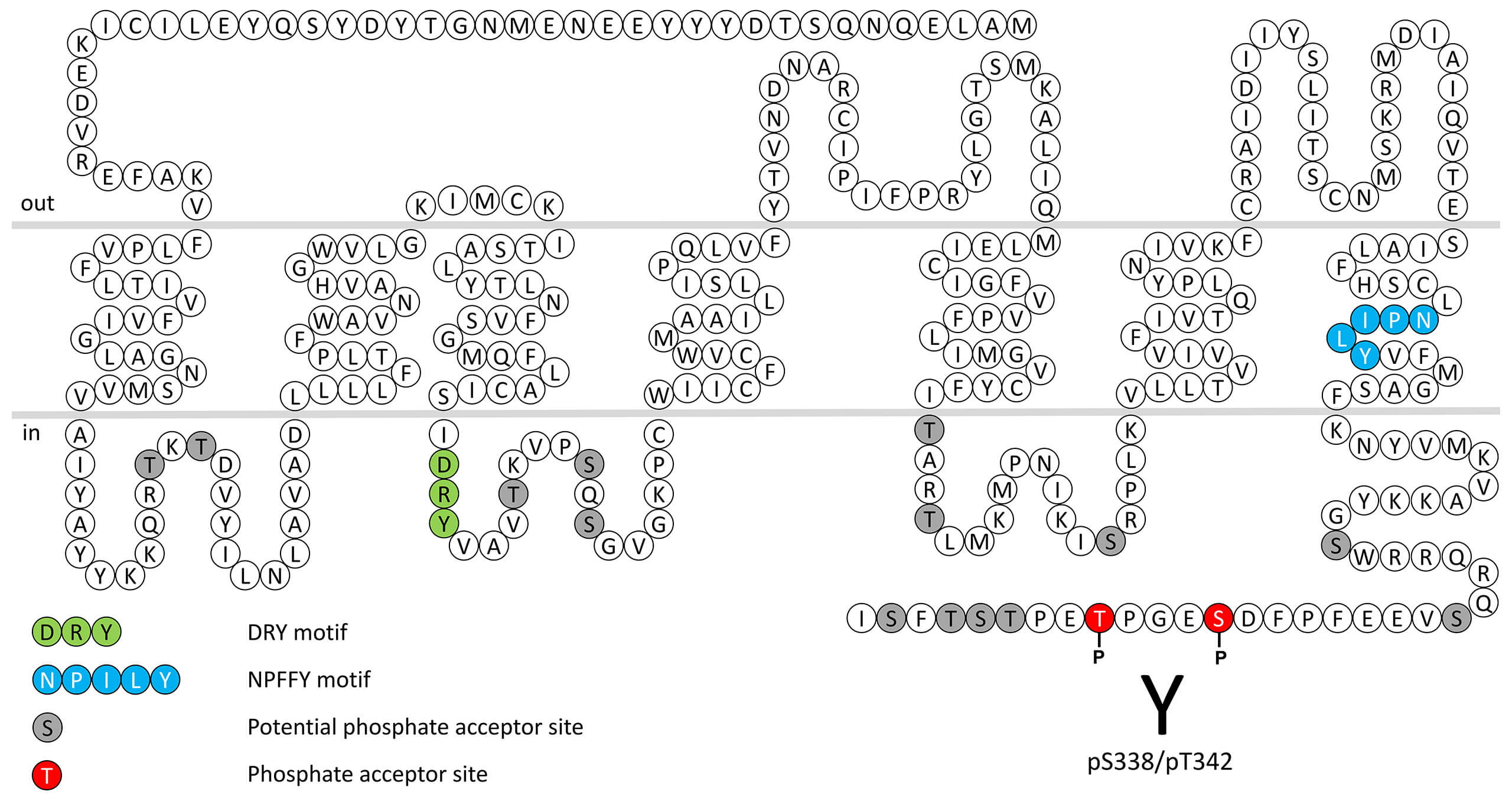Atypical Chemokine Receptor 4 Antibodies

The atypical chemokine receptor 4 (ACKR4) acts as chemokine scavenger (also known as chemokine decoy receptor). ACKR4 can sequester a broad range of chemokines including CCL2, CCL8, CCL13, CCL19, CCL21 and CCL25. Chemokine-binding does not activate G-protein-mediated signal transduction but instead induces beta-arrestin recruitment, leading to ligand internalization. ACKR4 plays an important role in controlling the migration of immune and cancer cells that express chemokine receptors CCR7 and CCR9, by reducing the availability of CCL19, CCL21, and CCL25 through internalization. ACKR4 negatively regulates CXCR3-induced chemotaxis. ACKR4 also regulates T-cell development in the thymus. ACKR4 receptor function is regulated by phosphorylation of carboxyl-terminal serine338/threonine342 (pS338/pT342-ACKR4). This nomenclature refers to the human ACKR4 receptor. This phosphorylation motif is highly conserved across species and is identical in mice and humans. For more information on ACKR4 pharmacology please refer to the IUPHAR database. For further reading refer to:
Bachelerie F, Ben-Baruch A, Burkhardt AM, Combadiere C, Farber JM, Graham GJ, Horuk R, Sparre-Ulrich AH, Locati M, Luster AD, Mantovani A, Matsushima K, Murphy PM, Nibbs R, Nomiyama H, Power CA, Proudfoot AE, Rosenkilde MM, Rot A, Sozzani S, Thelen M, Yoshie O, Zlotnik A. International Union of Basic and Clinical Pharmacology. LXXXIX. Update on the extended family of chemokine receptors and introducing a new nomenclature for atypical chemokine receptors. Pharmacol Rev. 2013 Nov 11;66(1):1-79. doi: 10.1124/pr.113.007724. Print 2014. Review. Erratum in: Pharmacol Rev. 2014 Apr;66(2):467. PubMed PMID: 24218476; PubMed Central PMCID: PMC3880466.
 pS338/pT342-ACKR4 (phospho-Atypical Chemokine...
pS338/pT342-ACKR4 (phospho-Atypical Chemokine...  ACKR4 (non-phospho), Atypical Chemokine...
ACKR4 (non-phospho), Atypical Chemokine... 

